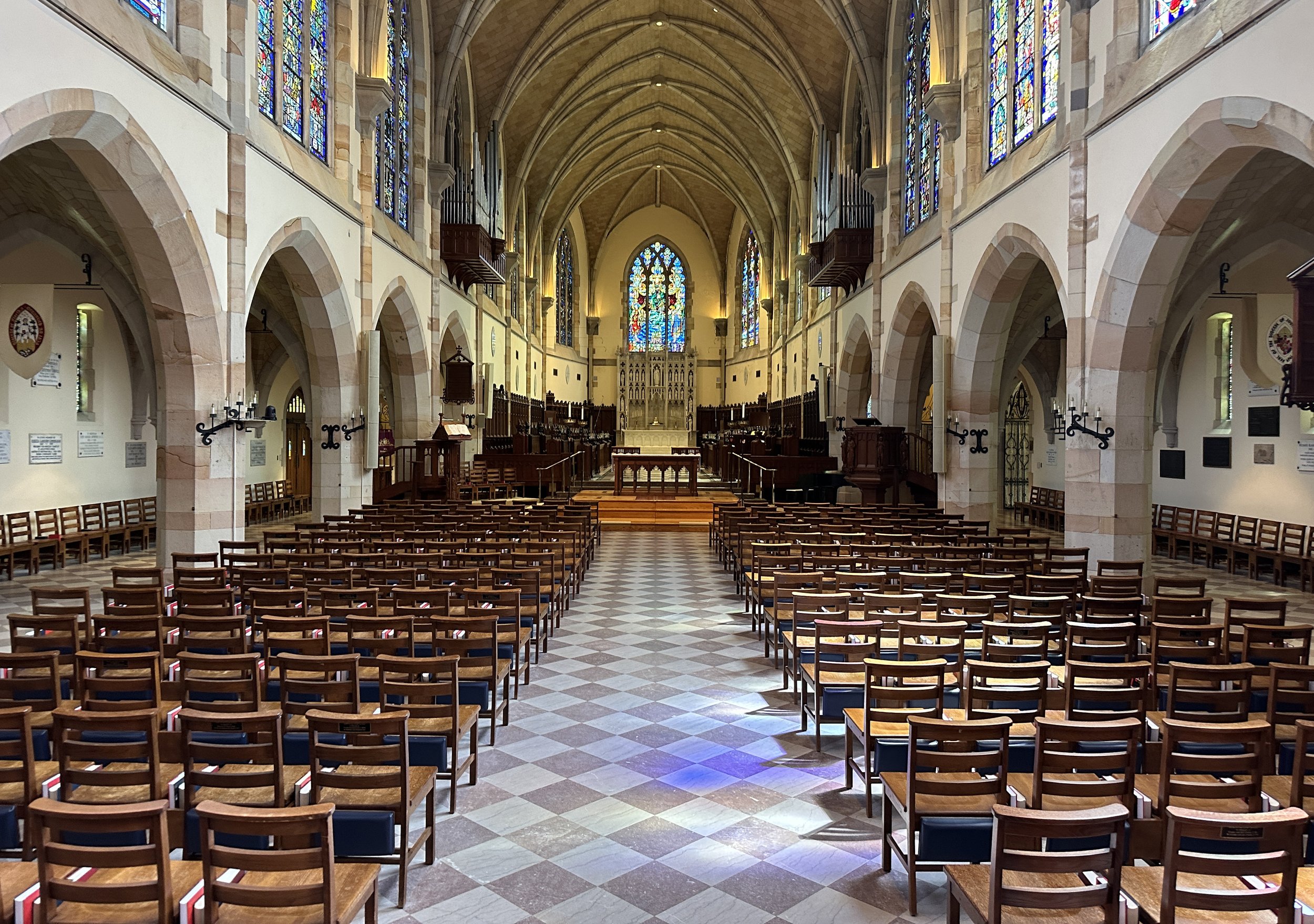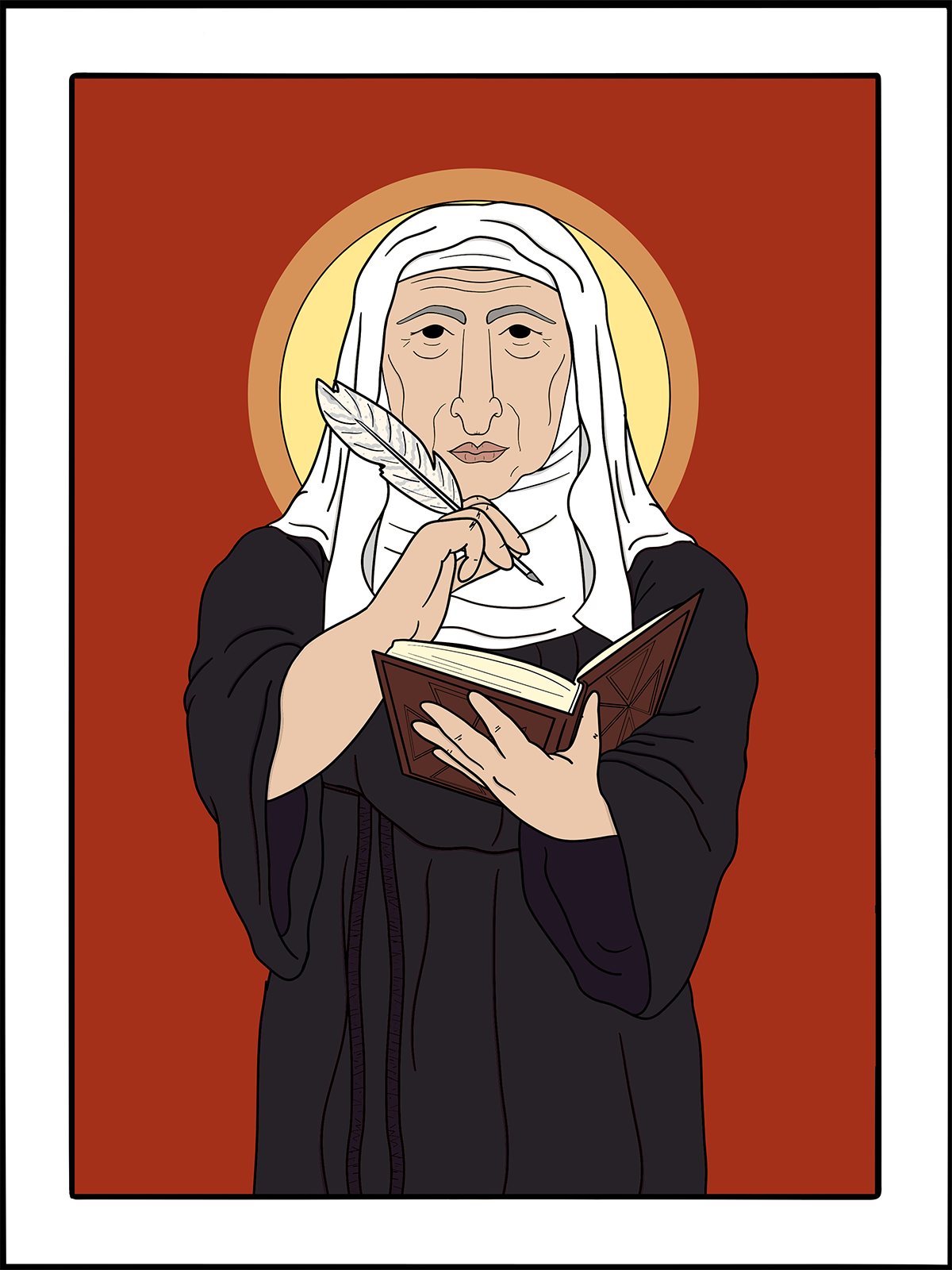
September 17
Hildegard of Bingen
Mystic and Scholar, 1179
art by Rev. Kirsten Kohr of Geneva, Ohio God of all times and seasons: Give us grace that we, after the example of your servant Hildegard, may both know and make known the joy and jubilation of being part of your creation, and show forth your glory in the world; through Jesus Christ our Savior, who lives and reigns with you and the Holy Spirit, one God, for ever and ever. Amen.
Hildegard of Bingen, born in 1098 in the Rhineland Valley, was a mystic, poet, composer, dramatist, doctor, and scientist. Her parents’ tenth child, she was tithed to the church and raised by the anchoress Jutta in a cottage near the Benedictine monastery of Disibodenberg.
Drawn by their life of silence and prayer, other women joined them, finding the freedom, rare outside of women’s religious communities, to develop their intellectual gifts. They organized as a convent under the authority of the abbot of Disibodenberg, with Jutta as abbess. When Jutta died, Hildegard, then 38, became abbess. Later she founded independent convents at Bingen (1150) and Eibingen (1165), with the Archbishop of Mainz as her only superior.
From childhood, Hildegard experienced dazzling spiritual visions. When she was 43, a voice commanded her to tell what she saw. Thus began an outpouring of extraordinarily original writings, illustrated by unusual and wondrous illuminations. These works abound with feminine imagery for God and God’s creative activity.
In 1147, Bernard of Clairvaux recommended her first book of visions, Scivias, to Pope Eugenius III, leading to papal authentication at the Synod of Trier. Hildegard quickly became famous, and was eagerly sought for counsel, becoming a correspondent of kings and queens, abbots and abbesses, archbishops and popes.
She carried out four preaching missions in northern Europe, which was an unprecedented activity for a woman. She also practiced medicine, focusing on women’s needs; published treatises on natural science and philosophy; and wrote a liturgical drama, The Play of the Virtues, in which the personified virtues sing their parts and the devil, condemned to live without music, can only speak. For Hildegard, music was essential to worship. Her liturgical compositions, unusual in structure and tonality, were described by her contemporaries as “chant of surpassing sweet melody” and “strange and unheard-of music.”
Hildegard lived in a world accustomed to male governance. Yet within her convents, and to a surprising extent outside of them, she exercised a commanding spiritual authority based on confidence in her visions and considerable political astuteness. When she died in 1179 at the age of 81, she left a rich legacy which speaks eloquently across the ages.
Excerpted directly from “Lesser Feasts and Fasts 2022,” p. 414-415.

